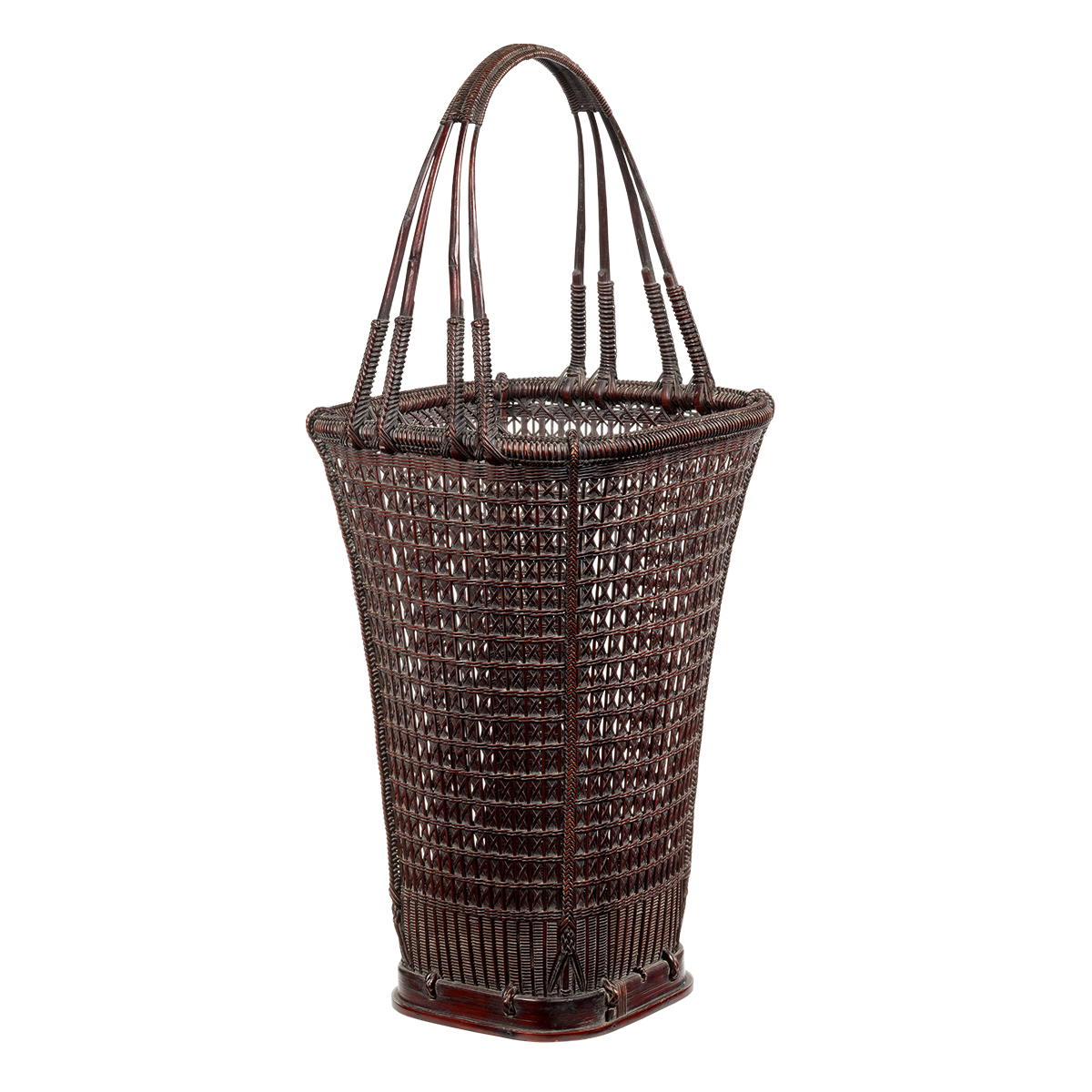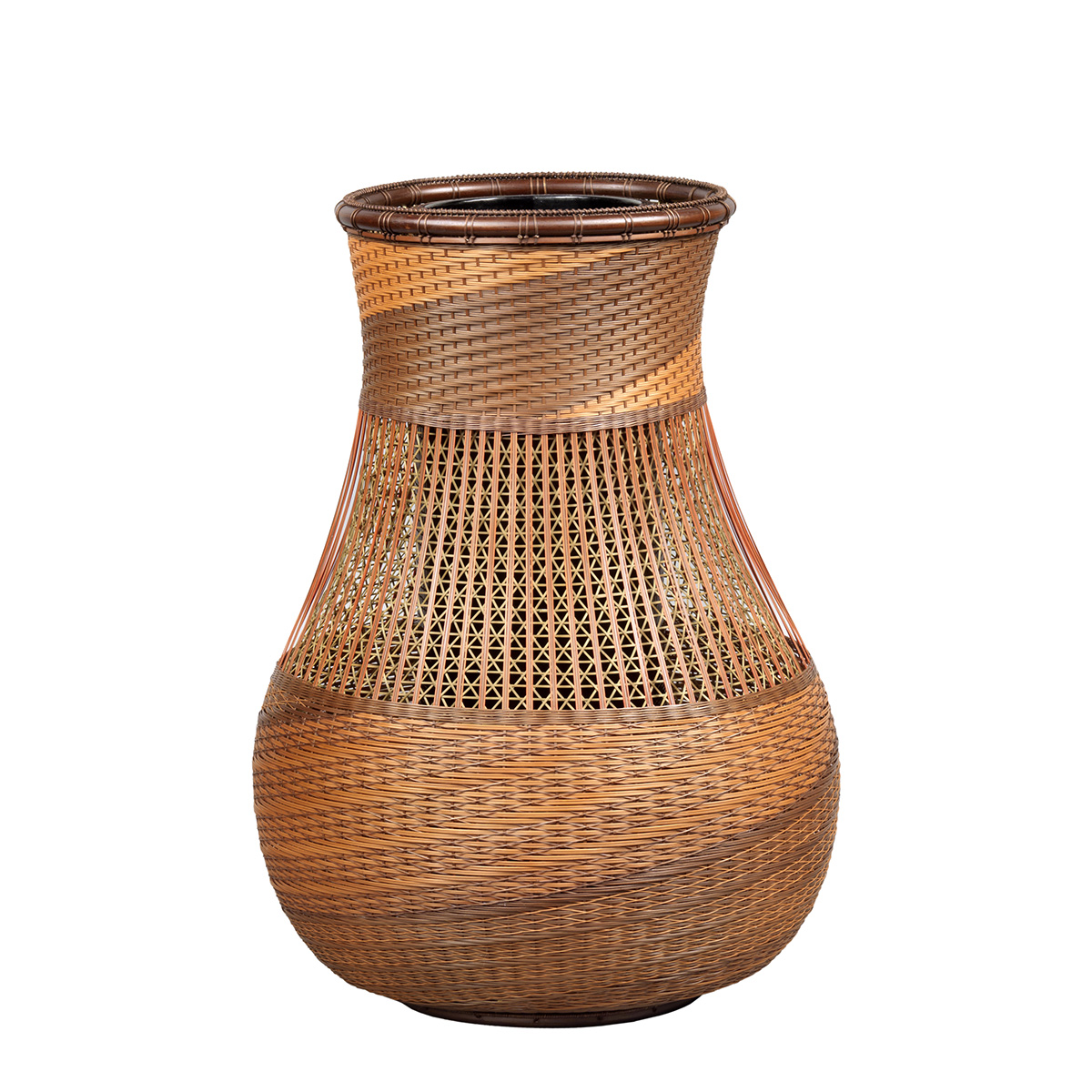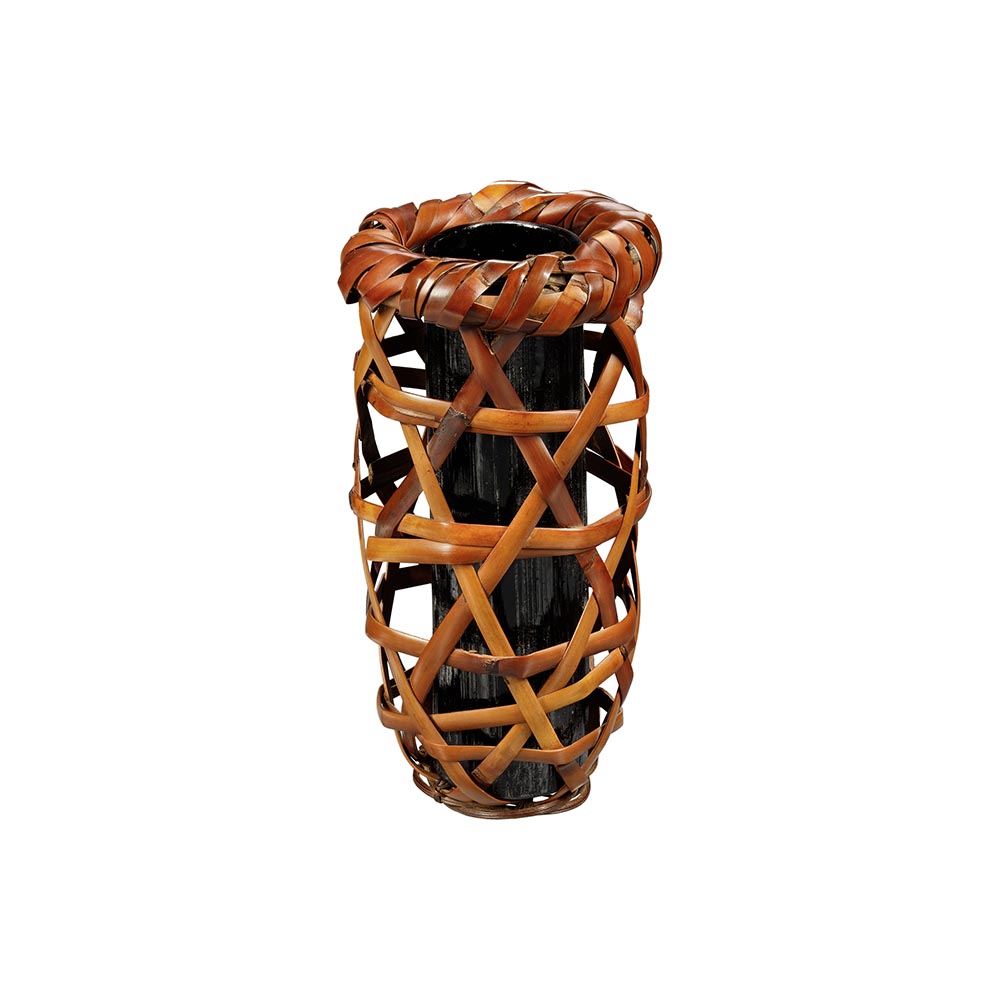Yuri-gata
Tanabe Chikuunsai I / Bambou
- Nous Contacter
-
Matériel
Bamboo madake, rattan & lacquer
-
Taille
46.5(h) x 20 x 18.6 cm
Description
Karamono Yuri-gata
Tanabe Chikuunsai I (1867-1937): Given name 常雄 Tsuneo
Kaifu-nansō “A House/ Studio Facing South” is a literal translation but the word might read “Minami
no shō” which is an area in Sakai City, south of Osaka City, where the artist’s studio stood.
Box : Tomobako
Hakogaki
Karamono utsushi, yurigata, hanakago [Chinese style, in the shape of a lily, flower basket]
with two seals, Kaifu-nansō, Chikuunsai zō kore with two seals “Ta tsune no in” [The seal of Tanabe Tsuneo] and Chikuunsai
Tanabe Chikuunsai I (1877-1937)
The third son of Tanabe Chikatoki Yoshitsune, doctor to Lord Matsudaira of the Amagasaki Domain, Tanabe Chikuunsai I (given the birth name of Tsuneo) took an early interest in crafts by regularly visiting a basket weaver neighbor.
When he turned twelve he became an apprentice in the Osaka workshop of the bamboo artist Wada Waichisai I (1851-1901), known for his meticulous and delicate weaving employed in Chinese-style baskets and ustensils for the sencha tea ceremony. He was only twenty-four when his master bestowed upon him the name of Chikuunsai ("Bamboo Cloud"), a name formerly held by Waichisai. Shortly afterward, he founded his own workshop and became an independent artisan.
In 1903 Tanabe Chikuunsai I presented his first works at the fifth National Industrial Exposition, then began to harvest many regional and national prizes. His workshop flourished, and many apprentices and established craftsmen worked there. It produced intensively for the domestic market and exported items to the United Kingdom, France, and above all Germany.
In 1910 he moved from Osaka to Sakai, a port town with a vibrant artistic scene. Sen no Rikyū (1522-1591), the greatest master of the wabi school of tea, was hiself from Sakai. This move favored many interactions with artists and literati, which allowed Chikuunsai I to develop his art. A literati in the Chinese tradition (bunjin), he also practiced the art of floral arrangement and calligraphy by studying Chinese painting and the sencha tea ceremony.
One of Chikuunsai I’s ryūrikyō-style hanging baskets was presented to Emperor Taishō during the latter’s visit to Osaka in 1914.
𝐈𝐧 𝟏𝟗𝟐𝟓 𝐡𝐞 𝐰𝐨𝐧 𝐭𝐡𝐞 𝐁𝐫𝐨𝐧𝐳𝐞 𝐌𝐞𝐝𝐚𝐥 𝐚𝐭 𝐭𝐡𝐞 𝐈𝐧𝐭𝐞𝐫𝐧𝐚𝐭𝐢𝐨𝐧𝐚𝐥 𝐄𝐱𝐡𝐢𝐛𝐢𝐭𝐢𝐨𝐧 𝐨𝐟 𝐌𝐨𝐝𝐞𝐫𝐧 𝐃𝐞𝐜𝐨𝐫𝐚𝐭𝐢𝐯𝐞 𝐚𝐧𝐝 𝐈𝐧𝐝𝐮𝐬𝐭𝐫𝐢𝐚𝐥 𝐀𝐫𝐭𝐬 𝐢𝐧 𝐏𝐚𝐫𝐢𝐬 for another ryūrikyō-style hanakago basket. Initially a basket weaver craftsman, he became an artist and held his first private exhibition of decorative art in bamboo.
Tanabe Chikuunsai I was at the head of an uninterrupted family lineage active over more than a century, and responsible for the training of many prestigious artists in the Kansai region.


